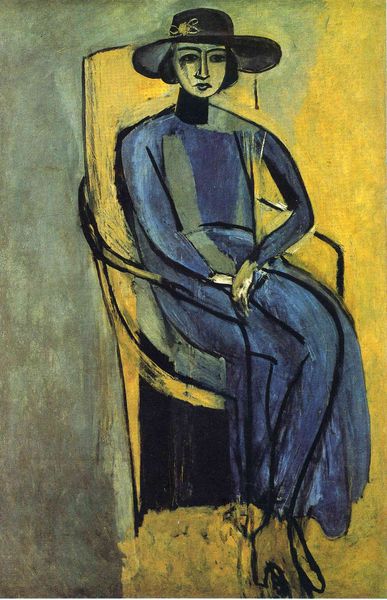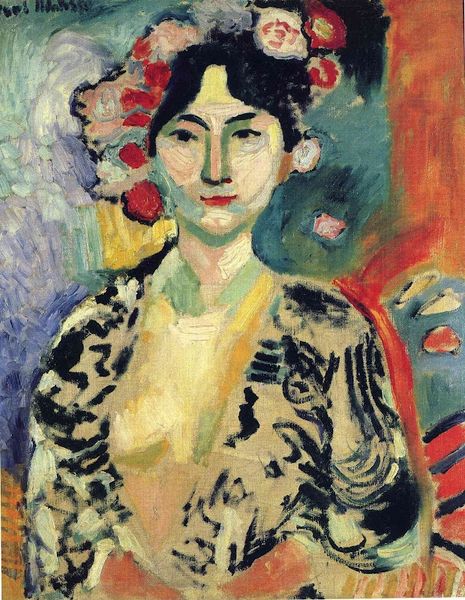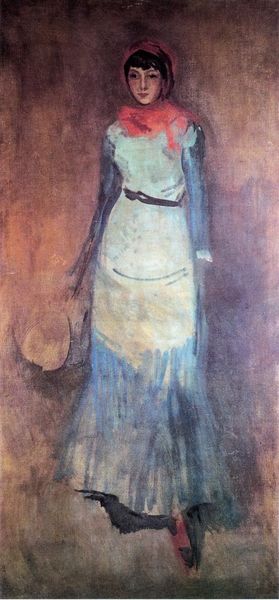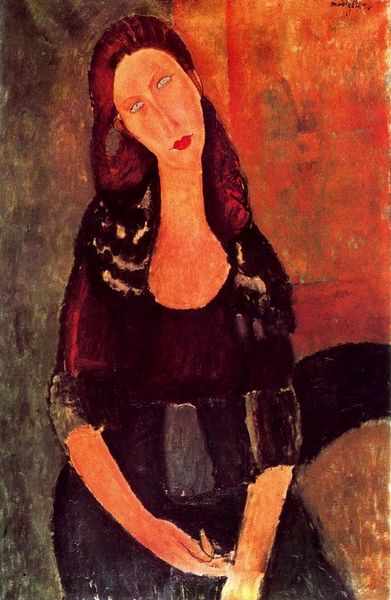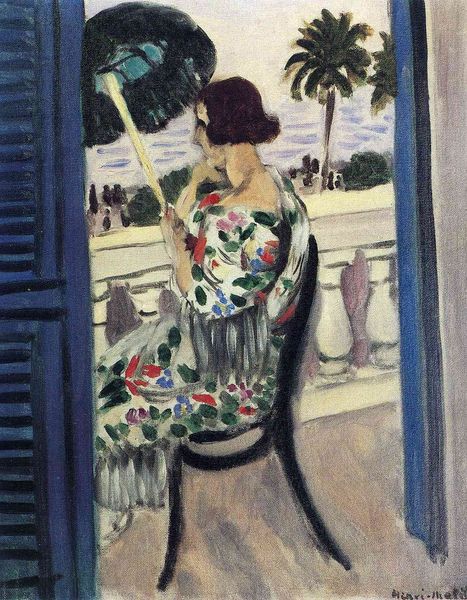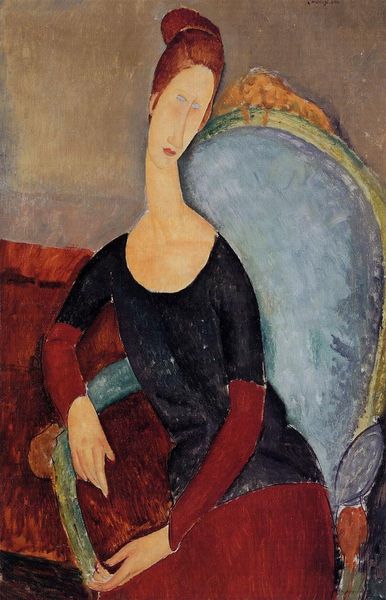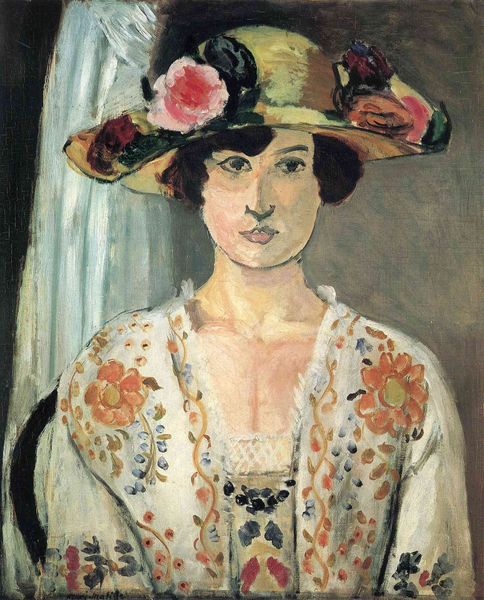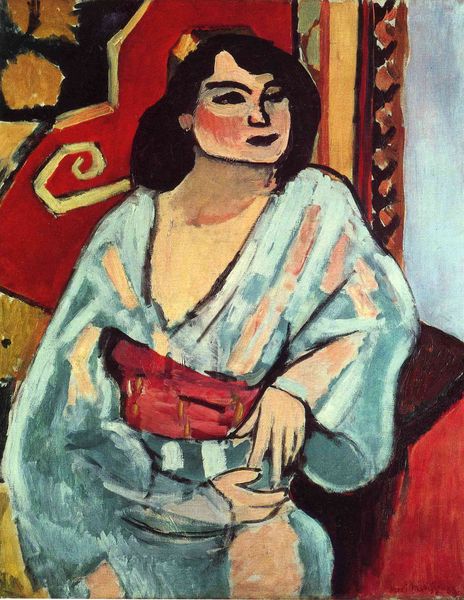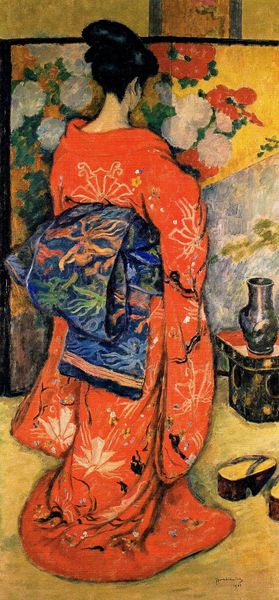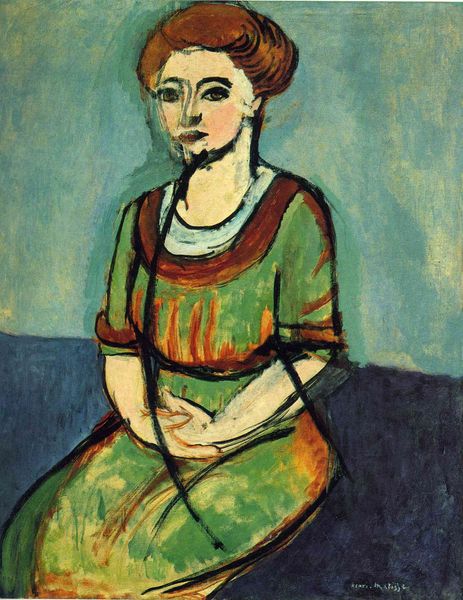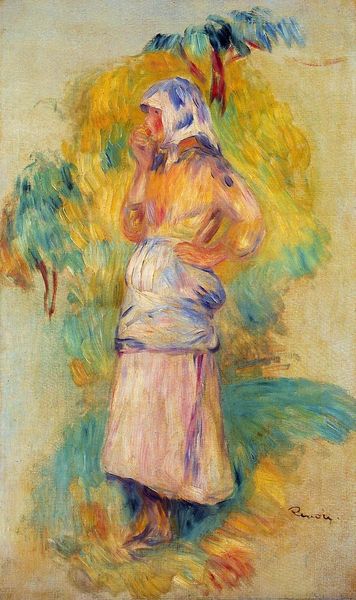
Copyright: Public domain US
Editor: So, here we have Henri Matisse’s "Manila Shawl," painted in 1911. It’s oil on canvas, and, well, the colours really jump out at you, don't they? It's such a vibrant, almost theatrical composition. What do you see in this piece, beyond the obvious? Curator: Beyond, eh? I see a joyous collision of interiority and performance. It’s more than just a portrait, it's an invitation into Matisse's imaginative space. Those swathes of colour – the blues, oranges, greens – they’re not just decorative, they’re emotional. They hum! What do *you* make of her pose? Editor: She seems a bit detached, or maybe contemplative? Not really posing *for* someone, but existing in her own world, somehow. Curator: Precisely! She’s adorned, but not objectified. The shawl, isn’t it a wonderful cascade of blooms and intricate patterns? And those clashing colors... He’s pushing the boundaries, testing how far he can go, right? The Fauvist spirit is ablaze here, don't you think? He’s really not attempting realistic representation, it's about conveying the feelings these items and this moment evoke in him. Does it work for you? Editor: I definitely see the Fauvism in the bold colors, yes. The freedom to explore a space without a sense of photographic obligation makes it really appealing. What does Matisse want to communicate with it all? Curator: I think he wants us to feel the joy he felt when painting it, when in the act of observation. Maybe he’s saying that truth isn't always found in exact representation, but in the artist's intuitive response. Art as pure sensation. He makes me smile. Does this artwork make you happy? Editor: It really does. Looking closer makes me understand and like it even more. Curator: That, my friend, is the power of looking, really looking. There’s always more there.
Comments
No comments
Be the first to comment and join the conversation on the ultimate creative platform.

